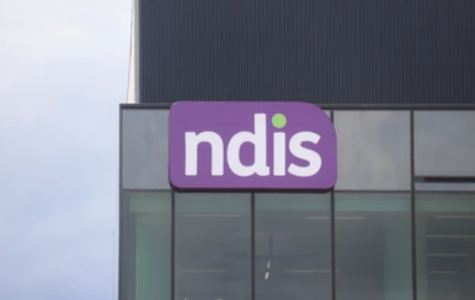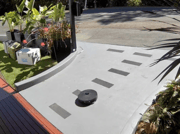Major NDIS shake-up hits, here’s what to expect
By
Gian T
- Replies 0
If you or a loved one relies on the National Disability Insurance Scheme (NDIS), you’ve probably heard whispers about some big changes coming down the pipeline.
The Albanese government has announced a major shake-up to the NDIS, aiming to bring the scheme back to its 'original intent' and ensure it remains sustainable for years to come.
But what does this actually mean for those already using the NDIS, and what new supports are on the horizon? Let’s break it all down in plain English, with a special focus on what it means for our over-60s community and their families.
The NDIS has been a lifeline for hundreds of thousands of Australians living with disability, but its rapid growth has raised concerns about long-term sustainability.
The government’s new plan is to introduce 'foundational supports'—a set of services and programs outside the NDIS, developed in partnership with states and territories.
The idea is to provide more help for people with less severe disabilities, so the NDIS can focus on those with the highest needs.
Health Minister Mark Butler recently outlined these changes, saying the NDIS should not be the only 'port in the storm' for people seeking support.
By building up alternative programs, the government hopes to ease pressure on the NDIS and make sure everyone gets the right help, at the right time.
One of the headline changes is the new 'Thriving Kids' program—a $2 billion initiative (with states and territories matching the funding) designed to support children with mild to moderate developmental delays and autism.
The goal is to provide early intervention and support outside the NDIS, so only those with the most significant needs enter the scheme.
The full details are still being finalised, but some key points have already been revealed. Bulk-billed health checks for three-year-olds will be introduced to help catch developmental delays at an early stage.
Children identified as needing additional support will also gain access to therapies such as occupational, speech, or psychosocial assistance through new Medicare-subsidised allied health appointments.
The program is scheduled to begin its rollout in mid-2026, with full implementation anticipated by mid-2027.
This is a big shift, and some disability advocates are worried about the tight timeline.
Skye Kakoschke-Moore, CEO of Children and Young People with Disability Australia, has voiced concerns about whether a fully functional system can be set up so quickly.
If you or your child is already on the NDIS, you might be wondering if you’ll be kicked off the scheme.
The government has been clear: no one will be removed from the NDIS until alternative supports are up and running.
Minister Butler has reassured families that children currently on the NDIS, or those who join before 2027, will remain eligible under the usual arrangements.
Regular reassessments (every 12–24 months) will continue for children under nine.
There’s also a new process in place: all participants now receive an 'impairment notice' from the NDIA, which determines their primary impairment (such as intellectual, cognitive, sensory, neurological, physical, or psychosocial).
From September, the way NDIS plans budgets is delivered will also change. Instead of receiving a big lump sum upfront, participants will get ongoing payments within a set period, based on their impairment needs.
This aims to make funding more flexible and better matched to individual circumstances.
The Thriving Kids program is only the start, with the government also planning new supports for other groups.
These include adults living with severe and complex mental illness, as well as teens and young adults with disability who are not eligible for the NDIS but still need help navigating major life transitions such as finishing school, finding employment, or moving out of home.
The details for these programs are still being developed, but the message is clear: the government wants to build a broader safety net, so people with disability can get the help they need, whether or not they’re on the NDIS.
If you’re caring for a grandchild or family member with disability, or if you’re an NDIS participant yourself, these changes could affect the supports you receive.
It’s important to stay informed and keep an eye out for updates as the new programs are rolled out.
For many older Australians, navigating the NDIS and related services can be confusing at the best of times.
These changes are designed to make the system fairer and more sustainable, but there may be some bumps along the way as new programs are introduced and old ones are adjusted.
 Have you or your family been affected by the NDIS? Are you worried about the upcoming changes, or do you think they’ll make things better? We’d love to hear your thoughts and experiences—share your story in the comments below.
Have you or your family been affected by the NDIS? Are you worried about the upcoming changes, or do you think they’ll make things better? We’d love to hear your thoughts and experiences—share your story in the comments below.
Read more: The government wants to contain NDIS growth. But ineligible people with disability also need support
The Albanese government has announced a major shake-up to the NDIS, aiming to bring the scheme back to its 'original intent' and ensure it remains sustainable for years to come.
But what does this actually mean for those already using the NDIS, and what new supports are on the horizon? Let’s break it all down in plain English, with a special focus on what it means for our over-60s community and their families.
The NDIS has been a lifeline for hundreds of thousands of Australians living with disability, but its rapid growth has raised concerns about long-term sustainability.
The government’s new plan is to introduce 'foundational supports'—a set of services and programs outside the NDIS, developed in partnership with states and territories.
The idea is to provide more help for people with less severe disabilities, so the NDIS can focus on those with the highest needs.
Health Minister Mark Butler recently outlined these changes, saying the NDIS should not be the only 'port in the storm' for people seeking support.
By building up alternative programs, the government hopes to ease pressure on the NDIS and make sure everyone gets the right help, at the right time.
One of the headline changes is the new 'Thriving Kids' program—a $2 billion initiative (with states and territories matching the funding) designed to support children with mild to moderate developmental delays and autism.
The goal is to provide early intervention and support outside the NDIS, so only those with the most significant needs enter the scheme.
The full details are still being finalised, but some key points have already been revealed. Bulk-billed health checks for three-year-olds will be introduced to help catch developmental delays at an early stage.
Children identified as needing additional support will also gain access to therapies such as occupational, speech, or psychosocial assistance through new Medicare-subsidised allied health appointments.
The program is scheduled to begin its rollout in mid-2026, with full implementation anticipated by mid-2027.
This is a big shift, and some disability advocates are worried about the tight timeline.
Skye Kakoschke-Moore, CEO of Children and Young People with Disability Australia, has voiced concerns about whether a fully functional system can be set up so quickly.
If you or your child is already on the NDIS, you might be wondering if you’ll be kicked off the scheme.
The government has been clear: no one will be removed from the NDIS until alternative supports are up and running.
Minister Butler has reassured families that children currently on the NDIS, or those who join before 2027, will remain eligible under the usual arrangements.
Regular reassessments (every 12–24 months) will continue for children under nine.
There’s also a new process in place: all participants now receive an 'impairment notice' from the NDIA, which determines their primary impairment (such as intellectual, cognitive, sensory, neurological, physical, or psychosocial).
From September, the way NDIS plans budgets is delivered will also change. Instead of receiving a big lump sum upfront, participants will get ongoing payments within a set period, based on their impairment needs.
This aims to make funding more flexible and better matched to individual circumstances.
The Thriving Kids program is only the start, with the government also planning new supports for other groups.
The details for these programs are still being developed, but the message is clear: the government wants to build a broader safety net, so people with disability can get the help they need, whether or not they’re on the NDIS.
If you’re caring for a grandchild or family member with disability, or if you’re an NDIS participant yourself, these changes could affect the supports you receive.
It’s important to stay informed and keep an eye out for updates as the new programs are rolled out.
For many older Australians, navigating the NDIS and related services can be confusing at the best of times.
These changes are designed to make the system fairer and more sustainable, but there may be some bumps along the way as new programs are introduced and old ones are adjusted.
Key Takeaways
- The federal government is rolling out 'foundational supports' with states and territories, aiming to provide more disability support outside the NDIS, especially for those with less severe disabilities.
- A new $2 billion program called Thriving Kids will focus on diverting children with mild to moderate developmental delay and autism away from the NDIS, with details to be finalised over the coming months.
- The changes to the NDIS will start from mid-2027, but current NDIS participants will remain on the scheme until alternative supports are in place; no child will lose access before that happens.
- Further reforms are planned, including support tailored for adults with severe mental illness and young people with disability facing key transitions, with a shift towards funding based on impairment needs rather than lump sums.
Read more: The government wants to contain NDIS growth. But ineligible people with disability also need support








